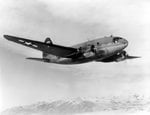buffnut453
Captain
imho a damaged aircraft flying all the way back to base where they land but are subsequently written off as being beyond economic repair it's a loss
Yes, it's a loss but it's not a kill. There's a difference. We simply don't have the records to determine which aircraft were deemed beyond economic repair and hence it introduces huge scope for interpretation and subjectivity. I identified the criteria i used in evaluating Mohawk and Hurricane performance against the Ki-43 which I believe is fair, consistent and as objective as it possibly can be.

